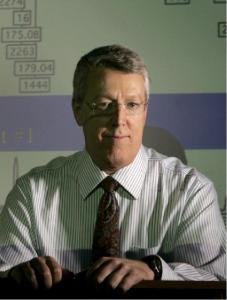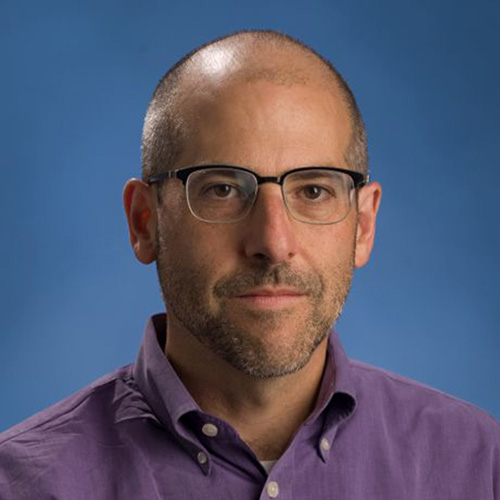Overarching GOALS
As new probabilistic and statistical methods are developed they must be implemented by the forensic community. CSAFE is focused on research to facilitate the implementation of methods and identify best practices for their use. Relevant research topics include finding optimal ways to communicate statistical conclusions –– both verbally and graphically, understanding the barriers to widespread implementation, and best practices for forensic practitioners, lawyers and judges.
Looking for
WEBINARS,
Short courses, presentations or publications
on Implementation and Practice?
Additional Team Members
Susan Vanderplas
susan.vanderplas@unl.edu
Nita Farahany
farahany@duke.edu
Gregory Mitchell
greg.mitchell@law.virginia.edu
Hal S. Stern
sternh@uci.edu
Robert Ramotowski
robert.ramotowski@nist.gov
Robert Thompson
robert.m.thompson@nist.gov
Dan Murrie
murrie@virginia.edu
Sharon Kelley
smk8n@virginia.edu
Nicholas Scurich
nscurich@uci.edu
Adele Quigley-McBride
aquigley@sfu.ca
Jennifer Teitcher
jennifer.teitcher@duke.edu
Kori Khan
kkhan@iastate.edu
focus Areas
Statistical evidence can be presented to attorneys, judges and jurors in a range of ways, from verbal descriptions of the weight of evidence to numerical scores to more complicated statistical summaries. CSAFE researchers are conducting studies with various forms of testimony and conclusions to determine if these new forms of testimony are better suited to minimize misinterpretation.
The goal of this project is to better understand how to convey forensic information to laypeople in a way that is accurate and comprehensible. Our research focused initially on terms used to convey forensic conclusions and how jurors understand them. We have studied how to convey proficiency and error rate information and begun to move towards more detailed mock trial scenarios — such as studies of competing experts testifying at trial.
First, in our new work, we need to better understand as a foundational matter what informs jurors regarding the strengths and limits of forensic evidence. Our prior work has given us an initial picture of this problem. In the next set of studies, we need more realistic designs and we need to keep up with developments in the field. We will examine new ways of conveying forensic information to lay jurors as the field moves towards new standards for terminology, including as developed by OSAC, and in some settings, the use of quantitative methods and conclusions. We are also moving towards more detailed designs, including with videos of mock courtroom testimony, and perhaps jury deliberation, to make for more realistic studies. We will examine what explains the varying weight that laypeople place on forensic testimony to better understand how to explain the strengths and limits of that evidence to them.
Second, we need to study new interventions that might change how laypeople evaluate forensic evidence. We will examine newly developed language, such as terminology developed by OSAC, language required by judges in their rulings, and its impact on lay decisionmakers. We need to study what effect jury instructions might have on visual presentations. Relatedly, in addition to studying lay decisionmaking, we will also assess what lawyers currently understand (and do not understand) about the evidence forensic experts currently present (or may, in the future, choose to present) in reports and testimony, so that we can better assess the role that lawyers play in presentation of forensic evidence. Similarly, we will survey judges to better understand their role and needs in this process (as also discussed in ED II). Research on how lawyers understand and misunderstand the language in forensic science reports may help forensic scientists develop more effective reporting language. And this work may help identify undesirable courtroom practices that might mislead jurors and help inform policy regarding how lawyers should conduct themselves at trial. Ultimately, we plan to develop model training for defense lawyers and judges that will also be of value to forensic scientists as they prepare for testimony and interact with legal professionals.
Third, based on this research, we will develop recommendations for how to better convey strengths and limits of forensic evidence in testimony, to inform new standards for such testimony. We will also develop recommendations for judicial instructions and evidentiary standards regarding forensic conclusions. Finally, we will make recommendations for work that defense lawyers and prosecutors can do to better educate jurors regarding strengths and limits of forensic evidence.
It is a key goal of CSAFE to better understand the impediments to adoption of probabilistic methods among forensic science practitioners and members of the legal community, so that they can be overcome and probabilistic methods can be effectively implemented. It is important to study attitudes of practitioners towards probabilistic analyses including both the benefits and disadvantages that they perceive. CSAFE researchers achieve this insight through surveys, interviews and observations of forensic practitioners in order to assess obstacles and methods to overcome them.
To be useful, the statistical applications developed by CSAFE will have to be adopted by forensic scientists and forensic service providers (FSPs). It is well-known that many forensic scientists and FSPs are skeptical, or even resistant, to the adoption of statistical applications. To facilitate the adoption of statistical applications, we need a better understanding of the organizational cultures of the FSPs that we hope will adopt them. Such understanding can be facilitated by a sociology of forensic science. Further, we also need a better sociological understanding of the discipline of forensic statistics. Many non-statisticians profess themselves bewildered by forensic statistics. While forensic statistics has made efforts to account for itself, it will be helpful to complement these with a sociological account, from an external perspective, about the discipline. An account that locates forensic statistics in its historical and sociological context can only enhance non-statisticians’ understanding of the discipline and nature of the applications it is seeking to implement.
Sociology of science is a well-established discipline that uses the tools of the social sciences to understand the making of scientific knowledge. While most work in sociology of science has focused on more traditional academic disciplines, like physics, biology, medicine, and engineering, there has long been a thriving line of research on forensic science. Sociologists of science are particularly drawn to forensic science because of its proximity to law, which brings two powerful truth-making social institutions (science and law) into close contact.
While there has been some work on the sociology of forensic science, there has been almost no work on the sociology of forensic statistics.
By sociologically analyzing the impact of statistical application on forensic laboratories and the reactions of forensic scientists to statistical applications, the project will allow forensic scientists to progress from a “local” perspective informed by their own experiences and personal interactions to a more “global” perspective informed by the experiences of the discipline as a whole with statistical applications.
The research will draw on the standard tools in the sociology of science. These include social scientific methods, such as interviews, participant-observation and ethnography, as well as methods drawn more from history of science, such analyses of scholarly debates conducted through published literature.
Knowledge Transfer
Page 2 of 5
Investigative Leads in Latent Prints: A Comparison of Laboratory Procedures
Type: Presentation Slides Research Area(s): Implementation and Practice,Latent Print
Published: 2022 | By: Amanda Wilson
The following was presented at the 74th Annual Scientific Conference of the American Academy of Forensic Sciences (AAFS), Seattle, Washington, February 21-25, 2022.
Characterizing verification and blind proficiency testing at forensic laboratories
Type: Presentation Slides Research Area(s): Implementation and Practice,Latent Print
Published: 2022 | By: Maddisen Neuman
The 2014 Bureau of Justice survey of publicly funded forensic crime laboratories found that while 97% of the country’s 409 public forensic labs reported using some kind of proficiency testing, only 10% reported using blind tests (Burch et al, 2016).…
How do latent print examiners perceive blind proficiency testing? A survey of practicing examiners
Type: Presentation Slides Research Area(s): Implementation and Practice,Latent Print
Published: 2022 | By: Brett Gardner
The current study sought to explore perceptions of BPT among practicing latent print examiners and determine whether such beliefs varied between examiners who work for laboratories with and without BPT. Overall, opinions regarding the value of BPT to accurately assess…
Blind Testing in Firearms Examination: Preliminary Results, Benefits, Limitations, and Future Directions
Type: Webinar Research Area(s): Forensic Statistics,Implementation and Practice,Training and Education
This CSAFE webinar was held on June 23, 2022. Presenters: Maddisen Neuman Quality / Research Associate, Houston Forensic Science Center Presentation Description: Open proficiency tests created by external vendors are used to meet accreditation requirements and demonstrate examiner competence;…
Surveying Practicing Firearm Examiners
Type: Publication Research Area(s): Firearms and Toolmarks,Implementation and Practice
Published: 2022 | By: Nicholas Scurich
A sample (n = 79) of practicing firearm and toolmark examiners was queried about casework as well as their views about the potential role that statistics might play in future firearm examinations and expert witness testimony. Principal findings include: The…
Blind testing in firearms: Preliminary results from a blind quality control program
Type: Publication Research Area(s): Firearms and Toolmarks,Implementation and Practice
Published: 2022 | By: Maddisen Neuman
Open proficiency tests meet accreditation requirements and measure examiner competence but may not represent actual casework. In December 2015, the Houston Forensic Science Center began a blind quality control program in firearms examination. Mock cases are created to mimic routine…
Extracting Case-Specific Data from Validation Studies
Type: Webinar Research Area(s): Forensic Statistics,Implementation and Practice,Training and Education
This CSAFE webinar was held on May 10, 2022. Presenters: Steve Lund Statistical Engineering Division, NIST Hari Iyer Statistical Engineering Division, NIST Presentation Description: The legal and scientific communities agree that any forensic method or algorithm should undergo validation testing…
Shining a Light on Black Box Studies
Type: Webinar Research Area(s): Forensic Statistics,Implementation and Practice
This CSAFE webinar was held on April 22, 2022. Presenters: Dr. Kori Khan Iowa State University Dr. Alicia Carriquiry Iowa State University Presentation Description: The American criminal justice system heavily relies on conclusions reached by the forensic science community. In…
Sampling for Forensic Practitioners Short Course
Type: Short Courses Research Area(s): Forensic Statistics,Implementation and Practice,Training and Education
This three-session short course took place on March 25, April 1, and April 8, 2022. Recordings of completed sessions and practicum materials can be found below. Presenters: Alicia Carriquiry Director of CSAFE Iowa State University Joseph Zemmels Graduate Research Assistant…
Modeling And iNventory of Tread Impression System (MANTIS): The development, deployment and application of an active footwear data collection system
Type: Webinar Research Area(s): Footwear,Forensic Statistics,Implementation and Practice
This CSAFE webinar was held on March 24, 2022. Presenters: Dr. Richard Stone Iowa State University Dr. Susan Vanderplas University of Nebraska, Lincoln Presentation Description: This webinar details the development, capabilities and successful deployment of the Modeling And iNventory of…
Latent Print Quality in Blind Proficiency Testing: Using Quality Metrics to Examine Laboratory Performance
Type: Presentation Slides Research Area(s): Implementation and Practice,Latent Print
Published: 2021 | By: Brett Gardner
Presented at American Association of Forensic Sciences (AAFS) 2021
The Implementation of a Blind Quality Control Program in a Forensic Laboratory
Type: Presentation Slides Research Area(s): Implementation and Practice,Latent Print
Published: 2021 | By: Callan Hundl
Presented at American Association of Forensic Sciences (AAFS) 2021
A Field Analysis of Laboratory Case Processing: Latent Print Comparison and Examiner Conclusions
Type: Presentation Slides Research Area(s): Implementation and Practice,Latent Print
Published: 2021 | By: Brett Gardner
Presented at American Association of Forensic Sciences (AAFS)
Using Mixture Models to Examine Group Differences – Studying Juror Perceptions of the Strength of Forensic Science Evidence
Type: Presentation Slides Research Area(s): Forensic Statistics,Implementation and Practice
Published: 2021 | By: Naomi Kaplan-Damary
The following presentation was presented at 2021 International Association for Identification (IAI)
A practical tool for information management in forensic decisions: Using Linear Sequential Unmasking-Expanded (LSU-E) in casework
Type: Publication Research Area(s): Implementation and Practice
Published: 2022 | By: Adele Quigley-McBride
Forensic analysts often receive information from a multitude of sources. Empirical work clearly demonstrates that biasing information can affect analysts' decisions, and that the order in which task-relevant information is received impacts human cognition and decision-making. Linear Sequential Unmasking (LSU; Dror et…
Forensic Science in Legal Education
Type: Publication Research Area(s): Implementation and Practice,Training and Education
Published: 2021 | By: Brandon Garrett
In criminal cases, forensic science reports and expert testimony play an increasingly important role in adjudication. More states now follow a federal reliability standard, following Daubert v. Merrell Dow Pharmaceuticals and Rule 702, which call upon judges to assess the…
Psychometrics for Forensic Fingerprint Comparisons
Type: Publication Research Area(s): Implementation and Practice,Latent Print
Published: 2021 | By: Amanda Luby
Forensic science often involves the evaluation of crime-scene evidence to determine whether it matches a known-source sample, such as whether a fingerprint or DNA was left by a suspect or if a bullet was fired from a specific firearm. Even…
Using Mixture Models to Examine Group Differences: An Illustration Involving the Perceived Strength of Forensic Science Evidence
Type: Webinar Research Area(s): Implementation and Practice,Training and Education
This CSAFE webinar was held on December 9, 2021. Presenter: Naomi Kaplan-Damary, PhD The Hebrew University of Jerusalem Presentation Description: Forensic examiners compare items to assess whether they originate from a common source. In reaching conclusions, they consider the probability…
Sampling for Forensic Practitioners Short Course
Type: Short Courses Research Area(s): Forensic Statistics,Implementation and Practice,Training and Education
The first session of this two-session short course took place on September 30, 2021. The second session took place on October 7, 2021. Recordings of both sessions can be found below. Presenter: Alicia Carriquiry Director of CSAFE Iowa State University…
Judges and forensic science education: A national survey
Type: Publication Research Area(s): Implementation and Practice
Published: 2021 | By: Brandon L. Garrett
In criminal cases, forensic science reports and expert testimony play an increasingly important role in adjudication. More states now follow a federal reliability standard, which calls upon judges to assess the reliability and validity of scientific evidence. Little is known…
Page 2 of 5
COMMUNITY CALL-TO-ACTION
Want to collaborate with CSAFE on a project. Contact us to share your idea.









